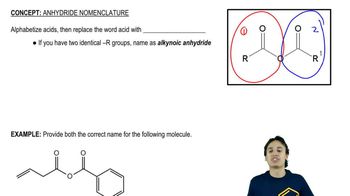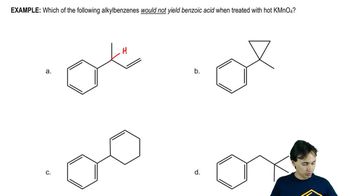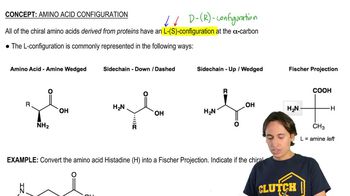Textbook Question
Draw structures to correspond with the following common and systematic names:
(n) trichloroacetic anhydride
(o) ethyl N-methyl carbamate
 Verified step by step guidance
Verified step by step guidance Verified video answer for a similar problem:
Verified video answer for a similar problem:



 3:35m
3:35mMaster Anhydride Nomenclature with a bite sized video explanation from Johnny
Start learning